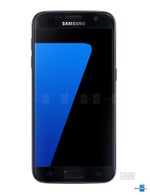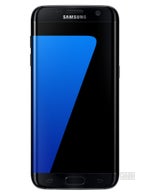Top 5 best smartphones for slow-motion video recording

Today, we're going to take a look at the cream of the smartphone crop as we try to figure out which smartphones offer the best slow-motion video capture.
In the past couple of years or so, a new trend has emerged in the premium sector of the smartphone market. No, this time around, we're not talking about the fingerprint scanner craze. Instead, we're talking about slow motion videos.
In the past couple of years or so, a new trend has emerged in the premium sector of the smartphone market. No, this time around, we're not talking about the fingerprint scanner craze. Instead, we're talking about slow motion videos.
In theory, the process is simple: capture video at the highest possible resolution and frame rate, and when the playing speed is lowered at the usual speed of 30 frames per second (fps), the objects in the video appear to be moving slower for a Matrix-like effect.
When thinking about which smartphones offer the best slow motion video capture, there are multiple details to bear in mind. Naturally, the imaging sensor and the video compression algorithms are of prime importance, since we're looking for quality videos in terms of brightness, focus, and color reproduction. Furthermore, some smartphones also offer manual video controls, which are really useful in the hands of a skilled cameraman.
When thinking about which smartphones offer the best slow motion video capture, there are multiple details to bear in mind. Naturally, the imaging sensor and the video compression algorithms are of prime importance, since we're looking for quality videos in terms of brightness, focus, and color reproduction. Furthermore, some smartphones also offer manual video controls, which are really useful in the hands of a skilled cameraman.
Strictly from a slow-motion perspective, what interests us is the resolution of the slow-motion video (more pixels = more details) and the frame rate at which videos are captured.
With all of this in mind, we took a look at the US smartphone market, and we've come to the conclusion that these are the top five smartphones for slow-motion video recording. Do note that the handsets are listed in no particular order.
Samsung Galaxy S7 and Galaxy S7 edge
The new Samsung Galaxy S7 and Galaxy S7 Edge are some of the best smartphones we've ever laid our hands on, and the two handsets do not disappoint in the video department.
The raw hardware reads like this: a 12MP primary sensor with an aperture of f/1.7, OIS, and dual-pixel autofocus. The sensor has a physical size of 1/2.6" and a pixel size of 1.4 µm.
The Galaxy S7 series can shoot slow-motion videos at a resolution of 720p and 240fps, as well as 1080p videos at 60fps. OIS is enabled in videos, and the blazing-fast dual pixel autofocus is perfect for making sure that moving subjects will always remain in focus.
Apple iPhone 6s Plus
No images
The iPhone 6S Plus is not only one of the best phablets money can currently buy, but it's also one of the best smartphones around when it comes to slow-motion video capture. Like its smaller sibling, the iPhone 6S, Apple's phablet can capture slow motion videos in either 1080p at 120fps, or in 720p at 240fps.
In terms of hardware, the iPhone 6S Plus features a 12MP sensor with a physical size of 1/3", OIS, and a pixel size of 1.22 µm.
Another interesting thing about the iPhone 6S Plus is that the smartphone's front-facing 5MP camera has the ability to capture slow-motion videos as well. Again, users can choose between 1080p videos at 120fps or 720p videos at 240fps. We can't actually figure why anyone would want to capture slow-motion videos using the secondary camera, but at least the option is available should a suitable context present itself.
LG V10
When it comes to video capture, the LG V10 is a top contender in the smartphone market, and yes, the smartphone's video recording chops also extend to slow-motion videos.
On the hardware side, the LG V10's primary camera is a 16MP sensor with a physical size of 1/2.6", an aperture of f/1.8, laser autofocus, and optical image stabilization.
While the LG V10's slow-motion video capture abilities are limited to its 720p @ 120fps mode, the reason why the LG V10 remains a top choice in the context of this article is its manual video mode. If you know what you're doing, you can use this manual mode to capture some astonishing videos.
While the LG V10's slow-motion video capture abilities are limited to its 720p @ 120fps mode, the reason why the LG V10 remains a top choice in the context of this article is its manual video mode. If you know what you're doing, you can use this manual mode to capture some astonishing videos.
Sure, the slow-motion effect that the LG V10 produces is a bit more toned down compared to what other handsets mentioned here have to offer, but if you need total control over the camera settings, then the LG V10 is the smart choice.
Google Nexus 6P
The Huawei-made Google Nexus 6P was the first Android smartphone to come with 720p 240fps slow-motion video recording. As such, it definitely deserves a spot on this list, especially since the handset also has the unique advantage of stock Android implementations and timely software updates.
The primary camera on the Google Nexus 6P is a 12.3MP sensor with an aperture of f/2.0, a physical size of 1/2.3", and 1.55µm pixels. Unfortunately, the Nexus 6P lacks hardware-based optical image stabilization, which is a rather important component when capturing videos.
Motorola Moto X Pure
If the premium smartphones that we've previously mentioned here are out of your budget, then you might want to turn your attention to the Motorola Moto X Pure Edition.
The primary camera on Motorola's current-gen flagship is a 21MP sensor with a physical size of 1/2.4" and 1.1µm pixels (the largest sensor on this list but the smallest pixel size due to the increased resolution). Other raw specs include an aperture of f/2.0 and phase-detection autofocus.






















Things that are NOT allowed: